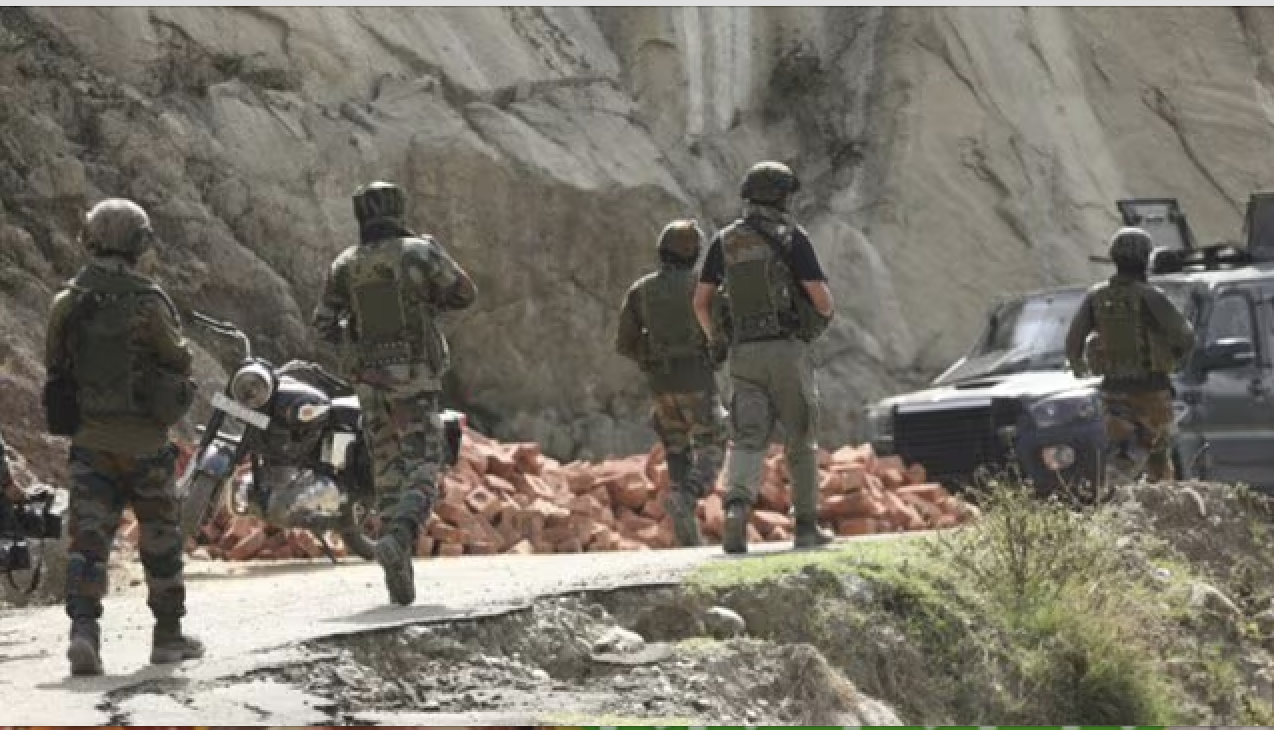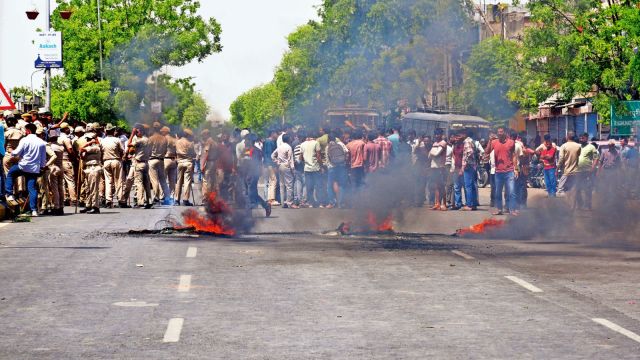
By Shivasundar / The Wire
Even though Hindutva organisations in India no longer need any institutional or constitutional endorsement of their actions or claims over history and the future, they use a combination of scientific rationality and majoritarianism to subdue and subjugate contesting claims.
They use scientific rationality to paint some of the customs and traditions of Muslims – like triple talaq and the practice of wearing hijab – as barbaric or backward. They also employ arguments of modernity and democracy, gender justice and liberating women from the clutches of the clergy and a conservative community.
They unhesitatingly make use of figures like B.R. Ambedkar, modern science and even the constitution to further their arguments – showing no sense of ambiguity. The counter questions on why the same principles are not applied to Hindu practices are either evaded or deemed to be ‘partisan’.
To protect Hindu or Brahmanical practises that are considered patriarchal, conservative, casteist or discriminatory from the gaze of secular law and other modern values, Hindutva groups advance the argument of faith over reason. Or they take shelter in the interpretation of the constitutional safeguard of innate religious freedom against external intervention, including the state and constitutional values.
The double standard of the Hindutva organisations is not new to Indian politics. They have been there since independence and have gained currency over the years. But what is newer and more disturbing is the internalisation of this double standard by the higher judiciary – especially over the past decade.
Take, for example, the recent judgment by the three-judge bench of the Karnataka high court banning the hijab in classrooms. The fundamental legal premises under which the bench pursued its reasoning was twofold.
One, wearing a hijab is not an essential religious practice of Islam and the right to conscience is not established by the averments made by the petitioners.
The second line of reasoning was a blatant endorsement of prejudices about the practice of wearing a hijab – that it constrains freedom and that the state is furthering the cause of secularism by imposing a uniform dress code in educational institutions. So much so that the court privileged the promotion of uniformity in these institutions over the continuation of education itself.
While the court showed its reluctance to apply the same principle to the turban, kumkum and other markers of different religions, it refused to consider the parallel in a judgment of a South African court which allowed the sporting of a nose stud along with the prescribed uniform. The strange logic offered by the court not to consider the example was that the nose stud was ocularly insignificant compared to the hijab.
Thus in the hijab case, the court accepted and improved on the principles of secularism and uniformity as advanced by the BJP government and the Hindutva forces – which in essence denied Muslim girls the right to wear hijab either as an essential practice of Islam or as the right to conscience of the individual.
Consider the irony in the Sabarimala case. When the top court used principles like secularism, gender justice and modernity to rule that the temple’s practice of denying entry to menstruating women was discriminatory, the Hindutva organisations defied the judgment and called for open rebellion by devotees. Subsequently, the Supreme Court readily agreed to reconsider its judgment and constituted a seven-judge bench to look into the judicial boundaries in defining essential religious practices and other matters related to religion.
Let us also compare how the higher judiciary considered the case for the right to conscience in the hijab case and the Ayodhya title case.
In the hijab case, the three-judge bench of the Karnataka HC declared:
“…Conscience is by its very nature subjective. Whether the petitioners had the conscience of the kind and how they developed it are not averred in the petition with material particulars. Merely stating that wearing hijab is an overt act of conscience and therefore, asking them to remove hijab would offend conscience, would not be sufficient for treating it as a ground for granting relief… No material is placed before us for evaluation and determination of pleaded conscience of the petitioners. They have not averred anything as to how they associate wearing hijab with their conscience, as an overt act. There is no evidence that the petitioners chose to wear their headscarf as a means of conveying any thought or belief on their part or as a means of symbolic expression.
Pleadings at least for urging the ground of conscience are perfunctory, to say the least.”
Thus, in the case of the hijab, the Muslim girls’ averments were not enough to uphold their right to conscience. The principle followed was that the petitioners should satisfy judges’ “evaluation and determination”. The judge is not the believer. But the court.
On the other hand, in the Ayodhya judgement, the five-judge bench of the Supreme Court suggested:
“…Matters of faith and belief lie in the personal realm of the believer. That which sustains solace to the soul is inscrutable. Whether a belief is justified lies beyond ken of judicial inquiry. This is not a case where the witness statements indicate that the belief or faith is a veneer or that it is being put- forth merely as a strategy in a litigation. Once the witnesses have deposed to the basis of the belief and there is nothing to doubt its genuineness, it is not open to the court to question the basis of the belief. Scriptural interpretations are susceptible to a multitude of inferences. The court would do well not to step into the pulpit by adjudging which, if any, of competing interpretations should be accepted. Faith is a matter for the individual believer.” [Emphasis supplied]
Here, the court is so liberal that it imposes boundaries and prohibits itself from transgressing into the domain of individual faith! Further, unlike in the hijab case, it does not demand any additional evidence to “evaluate and determine” the conscience or faith of the believer. It says:
“… Once the court has intrinsic material to accept that the faith or the belief is genuine and not a pretence, it must defer to the belief of the worshipper. This, we must do well to recognise, applies across the spectrum of religions and their texts, Hinduism and Islam being among them. The value of a secular constitution lies in a tradition of equal deference.”
How is it that in the Ayodhya case, where the petitioner is a Hindu devotee, the court only examines the genuineness of the faith and defers to the belief of the worshipper, whereas in the hijab case, the same principle is not extended?
How is it that in the Ayodhya case, even after considering ample archaeological evidence and proof which suggested otherwise, the court upheld the claims of the Hindus by privileging faith over reason, whereas in the hijab case, faith was dismissed as backward, non-secular and against the progress of the country?
How is it that the verdicts in both cases advanced the agenda of the Hindu right and denied the constitutional rights of minorities? This does not seem to be an aberration.
The privileging of faith over reason in the Ayodhya judgment by the SC has helped the Hindutva forces make new claims by openly subverting the spirit of the Places of Worship Act in many states.
In a separate case, a single-judge bench of the Karnataka high court applied the same principles in upholding the claims of a Hindu organisation to observe Hindu rituals in the Bababudan Swamy Dargah on the basis of the “genuineness of the faith” of petitioners. Thus, the judgment declared:
“… Article 25 of the Constitution guarantees Freedom of Conscience and free profession, practice and propagation of religion. By the impugned order, firstly, the State have infringed upon the right of Hindu Community to have the pooja and archana done in the manner as per their faith..”
Not only this, the judgment quoted a full paragraph of the Ayodhya judgment in justifying the Hindu claims, which was not backed by any evidence. Thus it said:
“..The Constitution Bench of the Hon’ble Supreme Court of India, in M.Siddique Vs. Mahanth Suresh Das, the Ram Janma Bhumi Temple case has held that faith is a matter for the individual believer. Once the Court has intrinsic material to accept that the faith or belief is genuine, it must defer to the belief of the worshipper.”
After the SCs decision to admit a number of petitions challenging the very Places Of Worship Act and its dilution in the Gyanvapi mosque case – where the SC declared that the law does not prohibit ascertaining the religious nature of the disputed shrines, the Hindutva forces are celebrating these developments as judicial endorsement of their agenda.
Thus, even though, the Rashtriya Swayamsevak Sangh (RSS) chief Mohan Bhagwat promises that his organisation will not participate in any temple movements, he has reiterated, “Muslim invaders destroyed thousands of temples and constructed mosques over it.”
Taking a cue from that statement, senior BJP leader and ex-Karnataka minister K.S. Eshwarappa has declared that there are more than 36,000 mosques in the country built over temples. And that the Muslims of today should not take the side of the invaders of the 15th century and hand over all of them to Hindus and only then peace and harmony would prevail.
Even as the hijab hearings were going on in the courts, the interim order which banned the hijab and saffron shawls – but not other religious markers like kumkum – in classrooms was blatantly misused by the government and private institutions by misinterpreting the order as universal and applicable to even teaching staff.
When this was brought to the notice of the court, the judges were reluctant to even hear the plea or specify their order and seemed satisfied by the oral promise made by the advocate general representing the government. Now, when the hijab ban is justified as an act of upholding secularism, even universities in Karnataka – which did not have any dress code hitherto – have started to ban the hijab on campus. Just a few days ago, girls wearing the hijab were denied entry to Mangalore University.
The double standards have also become evident in the bail hearings of Umar Khalid. While the court resorted to surgical anatomy of the word “jumla” and “Inquilab Zindabad” used by Khalid to find if there was a hidden anti-national agenda, it said slogans like “Goli Maro..” – used by prominent BJP leaders – cannot be considered hate speech if they were uttered with a “smiling face”.
Thus, whether it is a case of faith or a claim based on “evidence”, the Hindutva narrative emerges victorious. It is neither accidental nor coincidental. It is part of the structural changes that the Indian state is undergoing. The culpability of the liberal judiciary in the rise of fascism is documented in contemporary history. But when history repeats, it’s not only tragic but also a testament to the collective failure to learn from history.
This article first appeared on thewire.in






